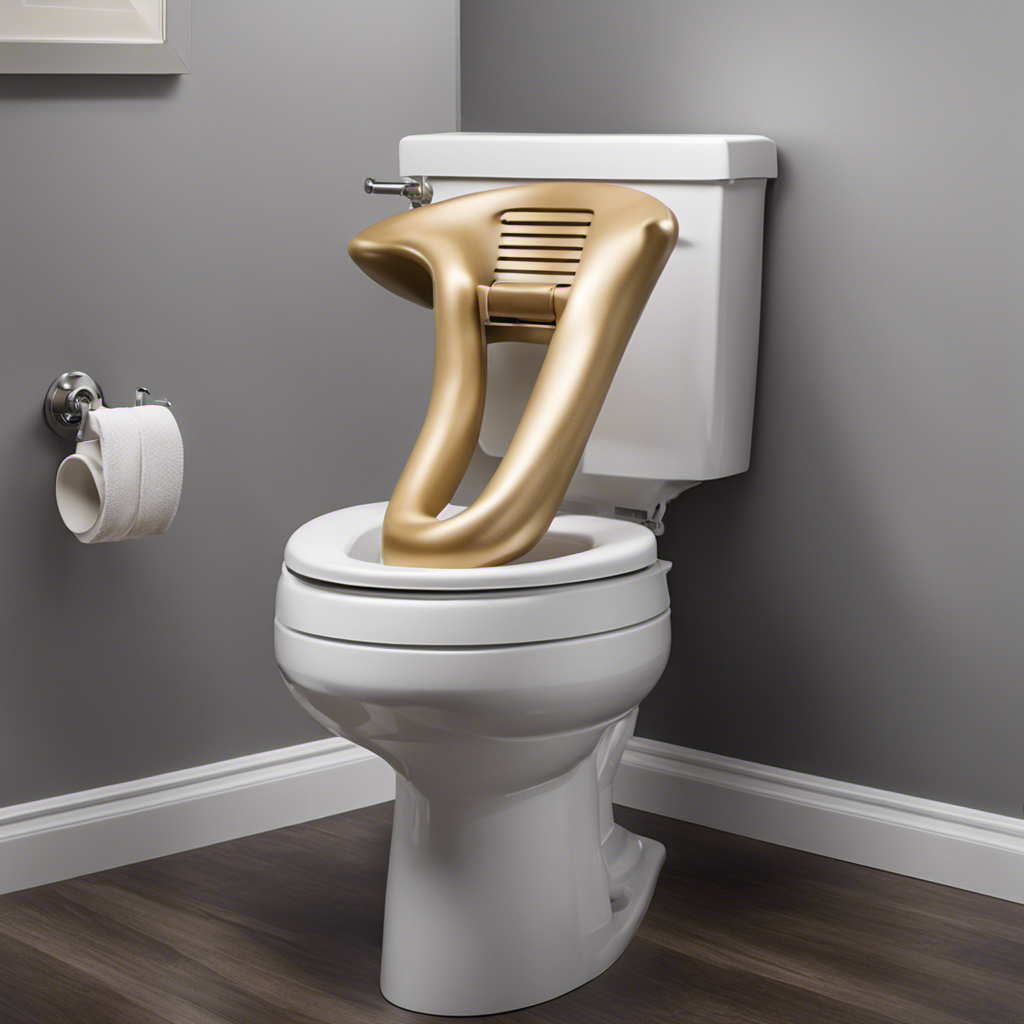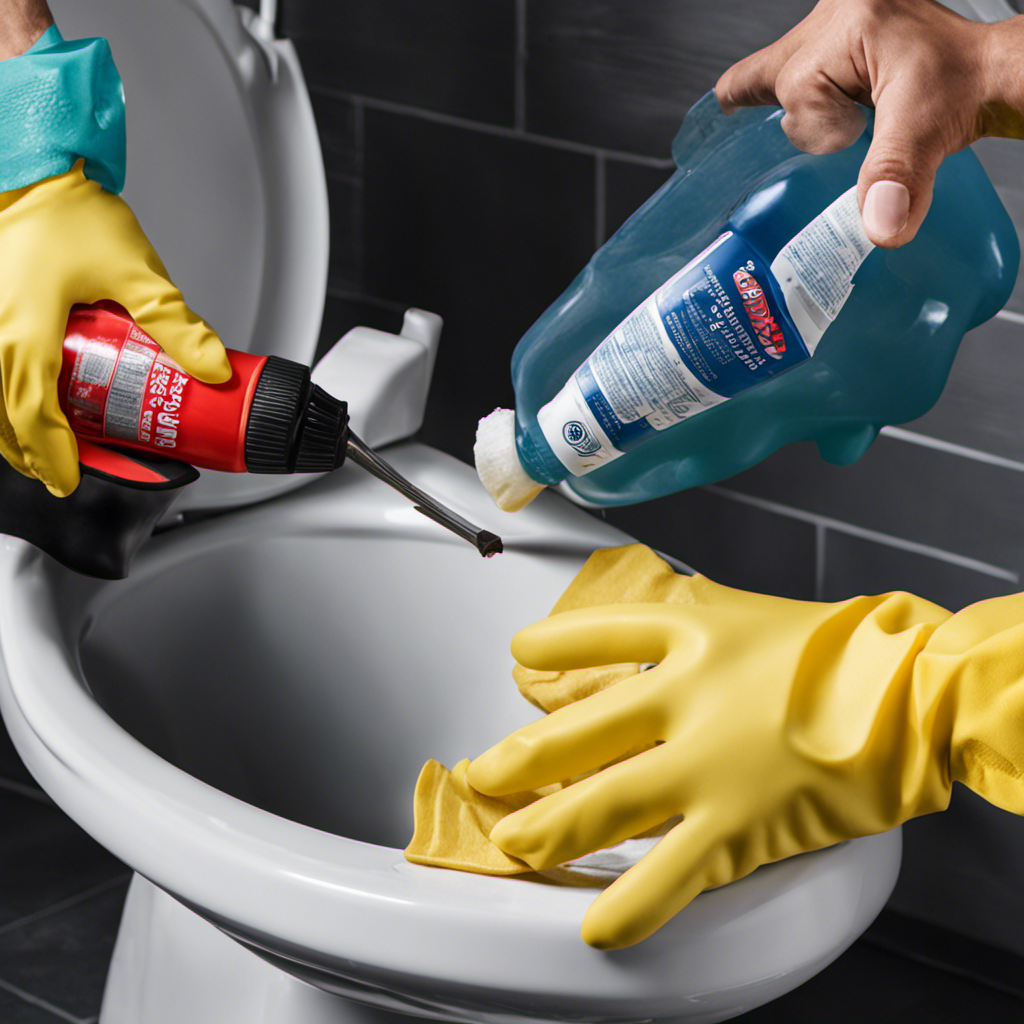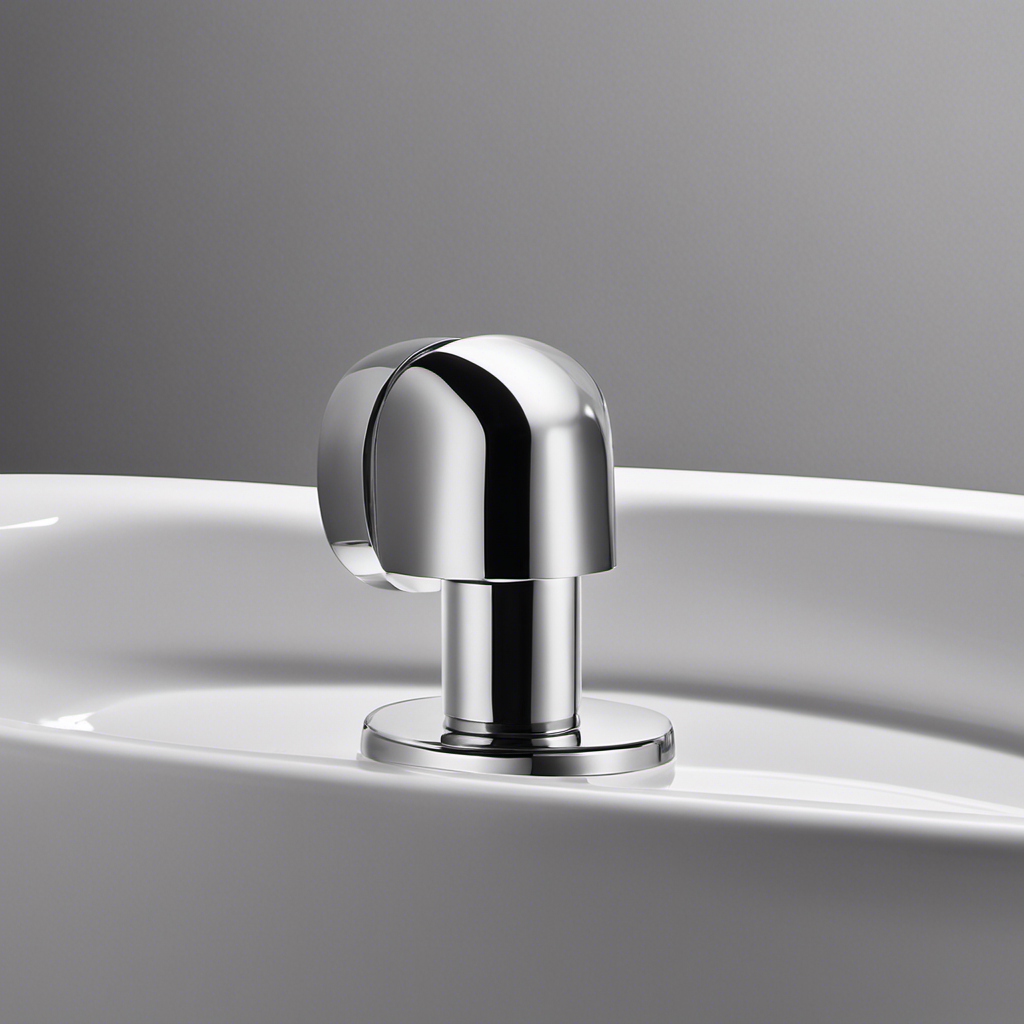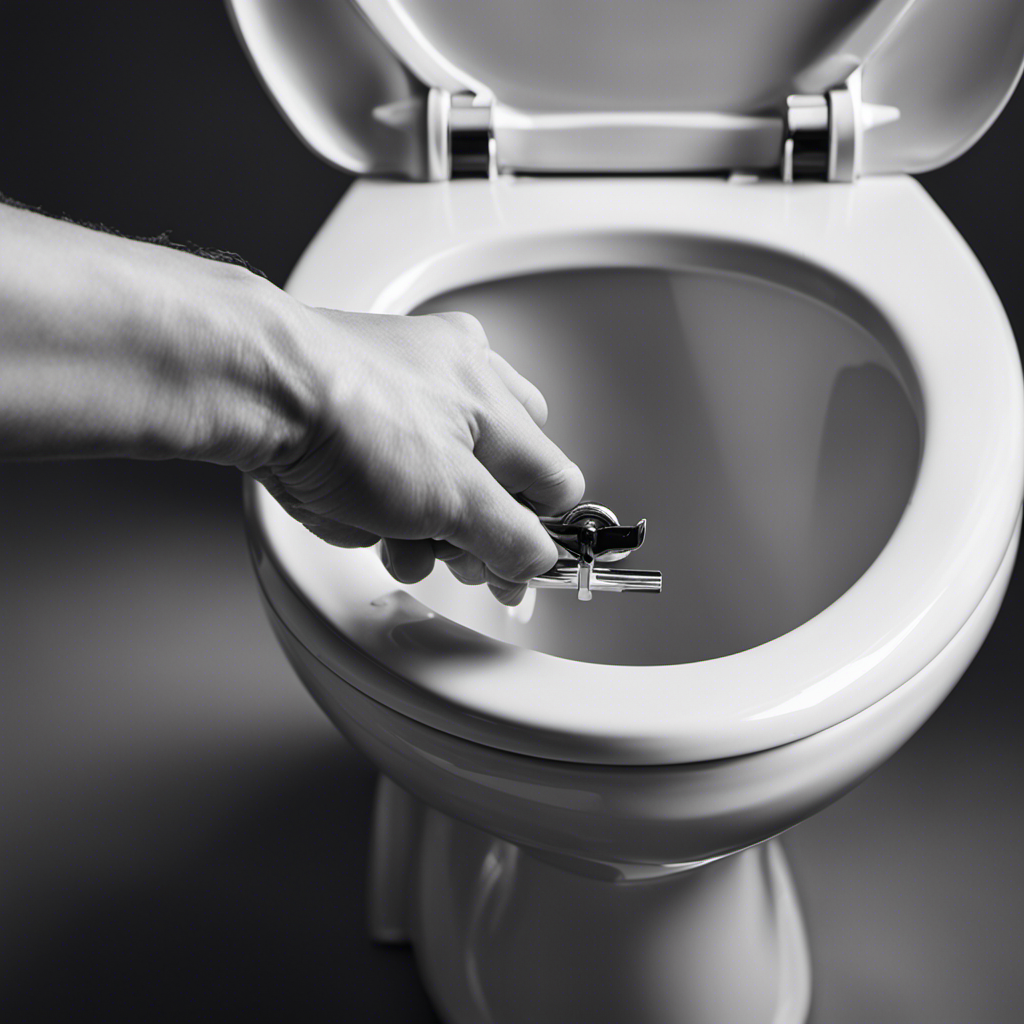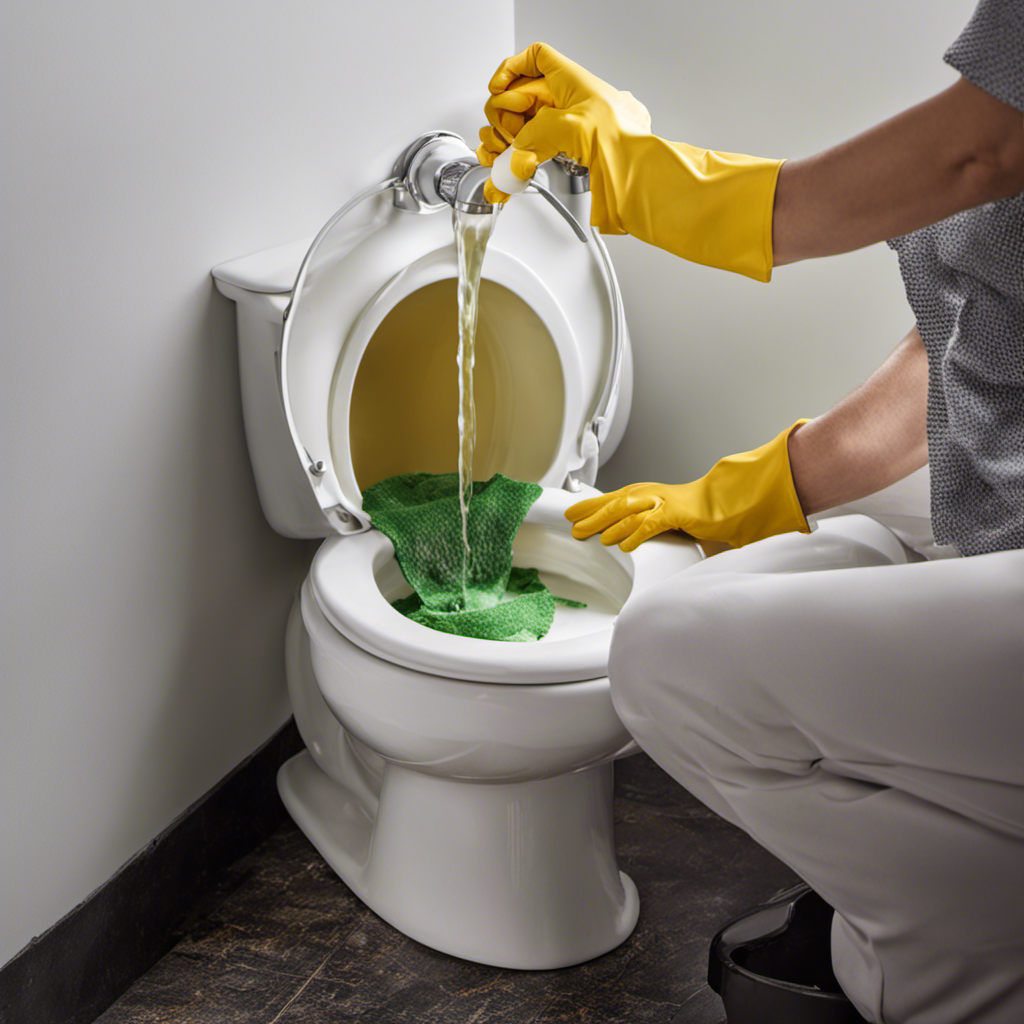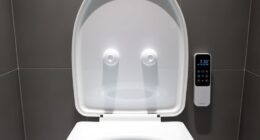Did you know that over 500,000 people undergo back surgery each year?
If you’re one of those individuals, you may be wondering how to navigate everyday tasks, like sitting on the toilet, post-surgery.
In this article, I’ll guide you through the proper techniques and assistive devices to make this process easier and more comfortable.
With the right knowledge and approach, you can regain your independence and maintain good posture while using the bathroom.
Let’s get started!
Key Takeaways
- Ensure clear pathways and no obstacles in the bathroom
- Install grab bars near the toilet for support
- Consider using a raised toilet seat or commode chair
- Maintain good posture and engage core muscles for spinal alignment and support
Preparing the Bathroom
You’ll want to make sure the bathroom is set up properly before sitting on the toilet after back surgery. Bathroom accessibility is crucial for your safety and comfort during your recovery.
To ensure a smooth and hassle-free experience, there are a few post-surgical precautions you should consider.
First, make sure that the bathroom is easily accessible, with clear pathways and no obstacles in your way. Install grab bars near the toilet to provide support and stability when sitting down or standing up. Consider using a raised toilet seat or a commode chair to reduce strain on your back.
It’s also important to keep essential items within reach, such as toilet paper, wipes, and hand sanitizer.
Taking these steps will help create a safe and comfortable environment for using the toilet during your recovery.
Choosing the Right Toilet Seat
When it comes to choosing the right toilet seat, there are three key considerations to keep in mind.
First, seat height is crucial, as it can greatly impact your comfort and ease of use.
Second, cushioning is important for added comfort, especially if you have any existing pain or discomfort in the buttocks or lower back.
Lastly, stability and support are essential to ensure safety and prevent any accidents or falls.
Seat Height Considerations
To ensure proper support and comfort after back surgery, it’s important to consider the height of the toilet seat.
As a healthcare professional, I rely on scientific evidence and stay updated with the latest research and guidelines in the field.
Post-operative precautions include raising the toilet seat to a height that minimizes strain on the back and promotes easier movement. This can be achieved by using a raised toilet seat or placing a toilet seat riser on top of the existing seat.
By raising the toilet seat, it reduces the amount of bending and twisting required, reducing strain on the surgical area.
It’s essential to prioritize the reader’s understanding and well-being, so let’s now discuss the importance of cushioning for added comfort after back surgery.
Cushioning for Comfort
For added comfort and support during your recovery, consider using a cushion to relieve pressure on your lower back. Posture and alignment are crucial factors in promoting healing and preventing further strain on your back. By using a cushion, you can maintain proper posture and alignment while sitting on the toilet, reducing the risk of discomfort or injury.
To help you choose the right cushion, here are some ergonomic seating options to consider:
| Cushion Type | Features |
|---|---|
| Memory foam | Contours to your body shape, providing personalized support |
| Gel | Distributes pressure evenly and provides a cooling sensation |
| Inflatable | Adjustable firmness to suit your comfort level |
| Wedge | Angled design to promote a natural spine alignment |
| Coccyx | Tailbone cutout for pressure relief and coccyx support |
Remember, it’s important to consult with your healthcare provider or physical therapist before using any cushioning device to ensure it is suitable for your specific needs and recovery stage. By prioritizing your comfort and support, you can enhance your overall well-being as you heal from back surgery.
To further enhance stability and support, let’s explore some additional strategies in the next section.
Stability and Support
Using a cushion can help you maintain stability and support while sitting.
As a medical writer, I strive to provide accurate and reliable information based on credible sources. Scientific evidence and up-to-date research are essential in guiding my writing.
In order to ensure clarity, I use language that is clear and straightforward, avoiding jargon or technical terms that may be difficult for the general public to understand. My writing is concise, focusing on key points without unnecessary elaboration.
In this context, stability and support while sitting are crucial for individuals recovering from back surgery. Rehabilitation exercises and pain management techniques play a vital role in the recovery process.
Using Assistive Devices
When it comes to using assistive devices, it’s important to understand the different types available and how to use them properly.
There are various types of devices that can help with mobility and daily activities, such as walkers, canes, and grab bars.
Knowing which device is best suited for your needs and how to use it correctly can make a significant difference in your independence and safety.
Types of Devices
To properly sit on the toilet after back surgery, you can try using a raised toilet seat or a commode chair. These assistive devices can provide added support and comfort during your recovery. Another option to consider is using portable options such as inflatable cushions. These cushions are designed to provide extra padding and support to alleviate pressure on your back while sitting. They can easily be deflated and carried with you, making them convenient for use in different locations. Here is a table that compares the features of raised toilet seats, commode chairs, and inflatable cushions:
| Device | Features | Benefits |
|---|---|---|
| Raised Toilet Seat | Adds height to the toilet seat | Easier to sit and stand |
| Commode Chair | Portable chair with a hole for toileting | Can be used anywhere in the house |
| Inflatable Cushion | Provides extra padding and support | Convenient for use in different places |
These options can help you maintain proper posture and reduce strain on your back while using the toilet.
Proper Usage Techniques
For better support and comfort, you might want to consider adjusting your posture while using the raised toilet seat or commode chair. Proper usage techniques are crucial to prevent any strain or discomfort, especially after back surgery.
To ensure your safety, it is important to follow some precautions. First, make sure the raised toilet seat or commode chair is securely in place before sitting down. Use the handrails or grab bars for added stability when lowering yourself onto the seat. Avoid sudden movements and take your time to sit down and stand up slowly.
Additionally, incorporating post-surgery exercises recommended by your healthcare provider can help strengthen your back muscles and improve flexibility. These exercises may include gentle stretching, strengthening, and range-of-motion movements. Remember to consult with your healthcare provider before starting any new exercise routine.
Proper Body Mechanics for Sitting
It’s important to maintain proper body mechanics while sitting on the toilet after back surgery. Proper body positioning is crucial to avoid straining and putting unnecessary pressure on the healing surgical site.
When sitting on the toilet, make sure to keep your back straight and supported. Use a raised toilet seat or add a cushion to achieve a comfortable height. Keep your feet flat on the floor to provide stability and support. Avoid excessive twisting or bending of the spine while sitting or standing up.
To maintain good posture, engage your core muscles and avoid slouching. If needed, use grab bars or a handheld device for extra support.
Maintaining Good Posture
Maintain good posture by keeping your back straight and supported while sitting. This is crucial for maintaining spinal alignment and avoiding strain and pressure on your back, especially after a surgery. As a healthcare professional, it is important to provide accurate and reliable information to help you recover and prevent further complications.
Here are a few emotional points to consider:
-
Sitting with good posture can alleviate discomfort and pain, allowing you to focus on your recovery and daily activities with ease.
-
By maintaining proper spinal alignment, you are giving your body the best chance to heal and regain strength.
-
Avoiding strain and pressure on your back can reduce the risk of complications and ensure a smoother recovery process.
Gradually Increasing Sitting Time
As I recover, gradually increasing the amount of time I spend sitting can help build my endurance and improve my overall mobility. It’s important to start slowly and listen to my body. Pain management is crucial during this process. Here is a table to help visualize the progression:
| Week | Sitting Time |
|---|---|
| 1 | 5 minutes |
| 2 | 10 minutes |
| 3 | 15 minutes |
| 4 | 20 minutes |
Frequently Asked Questions
What Are Some Common Complications That Can Arise From Sitting on the Toilet After Back Surgery?
Common complications from sitting on the toilet after back surgery may include pain, discomfort, and strain on the surgical site. To prevent these issues, it is important to take precautions such as using a raised toilet seat and maintaining proper posture.
Is It Safe to Sit on a Regular Toilet Seat After Back Surgery, or Should I Use a Special Cushion?
It is safe to sit on a regular toilet seat after back surgery, but using a special cushion can provide benefits like added comfort and support. There are alternatives to using a cushion, such as using a raised toilet seat or a grab bar for stability.
Are There Any Specific Exercises or Stretches I Should Do Before Sitting on the Toilet After Back Surgery?
Before sitting on the toilet after back surgery, it’s important to perform exercises and take precautions. Engaging in gentle stretches and strengthening exercises can help prepare your body for the movement and prevent strain or injury.
How Long Should I Wait After Back Surgery Before Attempting to Sit on the Toilet?
After back surgery, it’s important to take precautions when sitting on the toilet. The timing of when to attempt this will depend on your individual recovery progress. It’s best to consult with your healthcare provider for specific guidance.
Can I Use a Raised Toilet Seat With Handles Instead of an Assistive Device to Help With Sitting After Back Surgery?
Can a raised toilet seat with handles be used instead of an assistive device after back surgery? While it may seem convenient, it’s important to consider the benefits of using assistive devices specifically designed for post-surgery recovery.
Conclusion
In conclusion, it’s crucial to approach sitting on the toilet after back surgery with caution and proper technique. By following the steps outlined in this article, you can ensure a safe and comfortable experience.
Remember to prepare your bathroom, choose the right toilet seat, use assistive devices if needed, practice proper body mechanics, and maintain good posture. Gradually increasing your sitting time will help you regain strength and mobility.
By implementing these strategies, you will be on your way to a successful recovery. Stay informed, stay safe, and take care of your back!
